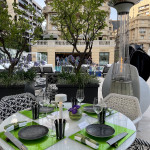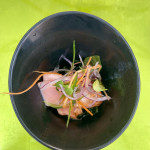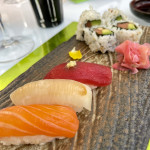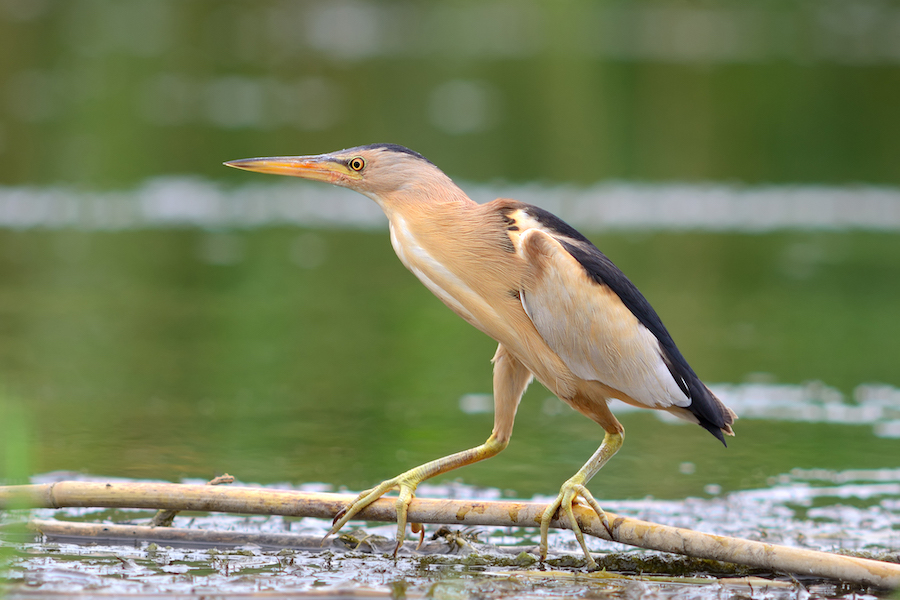Yoshi fans can now enjoy their favourite Michelin-star cuisine poolside as the Metropole Hotel takes its renowned Japanese restaurant to the Karl Lagerfeld-designed Odyssey rooftop terrace for the summer months.
Yoshi, the intimate dining room located on the ground floor of the Hôtel Metropole Monte-Carlo, got its Michelin star by “paying tribute to Japanese cuisine with premium ingredients and flawless technique”, according to the coveted guide. It remains the only Japanese restaurant in all of Monaco and the French Riviera to receive such an accolade.
Chef Takeo Yamazaki, 14 years at the helm, and his team are experts in creating picture-perfect nigiris, makis, sashimi, and teppanyaki fish and meat dishes, which are accompanied by the finest sakes, whiskeys and Japanese green teas that have been carefully selected by the head sommelier.
Now, the chefs are taking their talents to the rooftop kitchen where they will prepare their traditional cuisine for guests to enjoy al fresco by the swimming pool terrace and glamorous setting created by world-famous fashion designer Karl Lagerfeld.
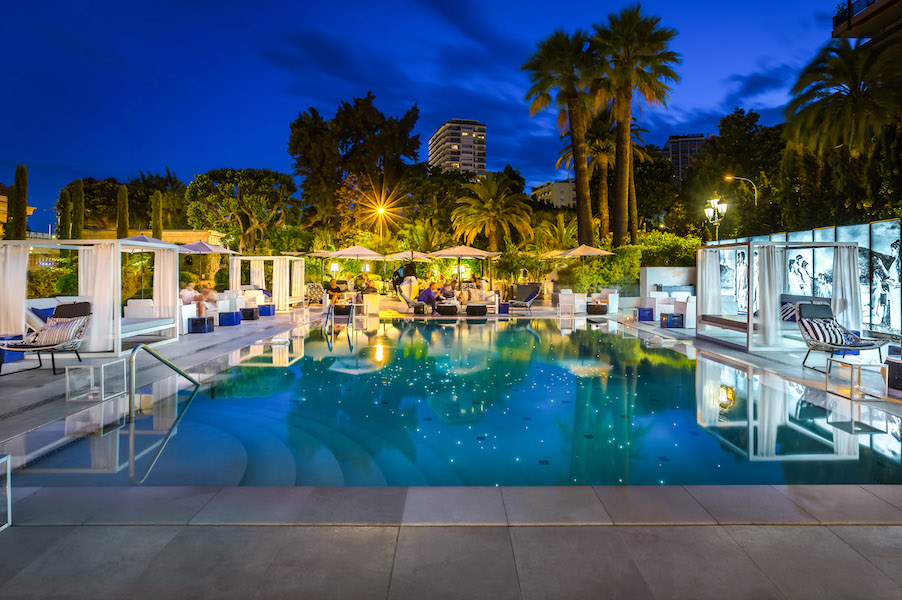
“The decision to bring Yoshi to Odyssey was initiated by our guests who wished to be able to enjoy an al fresco gastronomic offer,” Serge Ethuin, Genereal Manager of the Hôtel Metropole Monte-Carlo, told Monaco Life. “After consultation with chefs Christophe Cussac, Takeo Yamazaki and the catering team, we decided to grant our customers’ wishes.”
With its giant palm trees, cascades of wisteria and subtle notes of jasmine, the terrace and gardens form a veritable oasis in the heart of Monte-Carlo; a relaxing place to spend an evening with refreshing, light, Japanese cuisine.

During a press event on Wednesday 22nd June, we were treated to Chef Takeo Yamazaki’s signature dishes: Ebi Shinjo – a kombu consommé with a deliciously light and flavourful shrimp ball; Omakase – a selection of sushis and sashimis; and Ghindara – black cod marinated for 72 hours, perfectly grilled, and served in a decorative leaf accompanied by a warm miso broth.
Every ingredient, every creation, every plate is of extraordinary quality. Course after course is a delicious surprise.
Featured alongside each dish was a premium sake, Dassai 21. We learned that the number represents the degree to which the rice has been milled or polished. So, in Dassai 21, the rice grains have been polished so much that only 21% of the grains have actually been used. The lower the number, the more polished the rice grain and the higher quality the sake.
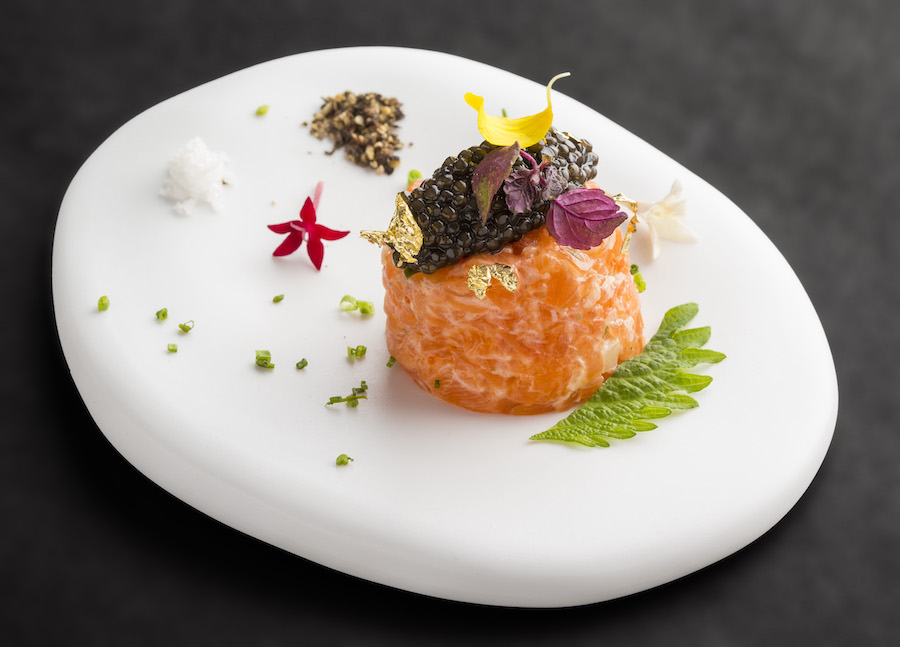
The rooftop traditionally houses Odyssey, a fixture in the hotel since 2013, headed by Chef Christophe Cussac and his Mediterranean-inspired menu. The Odyssey terrace restaurant is still open for guests during the day, between 12pm and 5pm.
“Since the opening on 17th June, we have been almost fully booked every night,” reveals Ethuin. “The guests love to have access to this glamorous setting created by Karl Lagerfeld, they also appreciate dining in this oasis in the heart of Monte-Carlo.
We believe that Lagerfeld would have been very proud to see Yoshi set up in the place he created because, for him, Yoshi was the best Japanese restaurant in Europe.”
Yoshi at Odyssey is open from Tuesday to Saturday, 7.30pm to 10.30pm, until the end of September.
Click on the gallery below to see more photos by Monaco Life of Yoshi at Odyssey…


